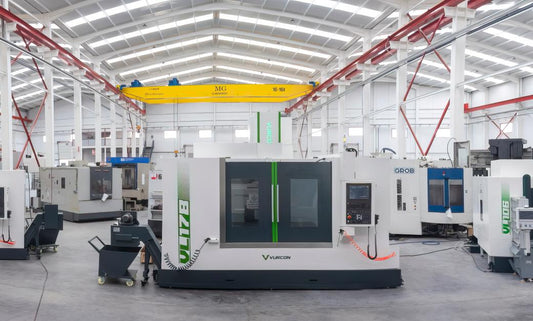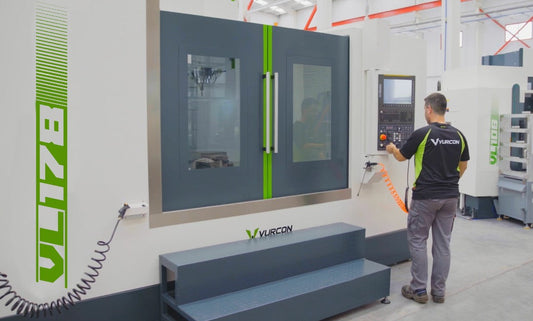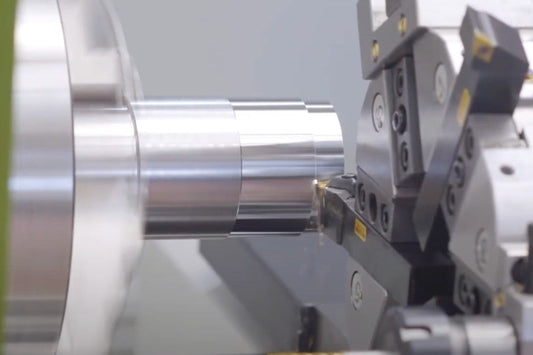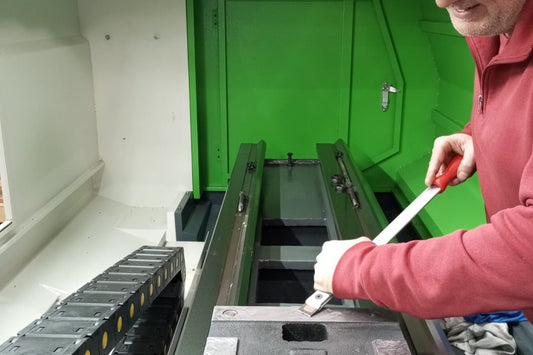How does a vertical lathe work?

The vertical lathe is a machine especially suited for machining medium and large pieces. This type of lathe has a vertically positioned axis, hence its name, and a rotating table mounted on a horizontal plane. This structure allows for more comfortable machining of large, heavy, and bulky pieces in any industrial sector.
Current vertical lathes can machine pieces with a diameter ranging from 1 to 20 meters. This allows it to be one of the most used machines in various industrial sectors today. But, besides this flexibility, they offer very precise and efficient metal removal.
The operation of a vertical lathe
The vertical lathe is a machining machine responsible for chip removal in metals. Its operation is relatively simple thanks to CNC (computer numerical control). The operator sets a series of commands and instructions on the control panel to perform the work. The machine only has to execute those prior commands on the piece once it starts.
A vertical lathe can perform up to 3 different movements:
- Main movement, by which the material is removed from the piece.
- Feed movement, which the tool follows to execute the work.
- Penetration movement to position the piece.
The spindle axis of a vertical lathe is perpendicular to the ground. This is one of the reasons why the pieces worked on this lathe are kept in a vertical position. This position means the machine does not have to apply as much clamping force on the piece, as it is standing.
Additionally, this position of the piece allows for applying greater cutting force. Thus, many more metal chips are removed, reducing work times and achieving greater productivity. An operation, therefore, that is more productive compared to horizontal lathes.
Uses and applications of these lathes
Vertical lathes have multiple uses and applications. They are mainly used for machining large and heavy pieces. Generally, these pieces must be transported and anchored on the lathe using overhead cranes. The structure in which the piece is placed is ideal for its machining.
The vertical lathe can also machine fragile pieces. In fact, not having to exert much pressure for clamping the piece makes it possible to handle these pieces more safely.
In this sense, vertical lathes are used in very diverse industrial sectors. They can perform machining work for the manufacture of rims, turbines, railroad wheels, propellers, fuselage components, and other large pieces. Sectors such as aerospace, automotive, railroad, bearings, gears, or oil industry indispensably use the vertical lathe. They are also used in applications for hydroelectric, naval, large electric motors, tunnel boring machines, etc.
In short, it is a machine with which you can cut, turn, mill, grind, and perform different complex tasks.
Main Advantages of the Vertical Lathe
The main advantage of vertical lathes is that they can machine the largest and heaviest parts. Unlike the horizontal lathe, they have an ideal structure for working with the most voluminous parts. Even without the need to exert great force in fixing the part, since it is placed vertically.
This will allow for less energy to be used in cutting and removing metal chips. Thus, in addition to achieving greater precision and accuracy, you will achieve more notable productivity with significant energy cost savings.
Moreover, being a CNC lathe, the risks of error are minimal. The operator will provide instructions to the lathe through the control panel for it to execute the design and turning of the part. This will be the only involvement of the worker, who will not have to handle the part in the process, also gaining greater occupational safety.
It should also be noted that modern vertical lathes include a waste management system to collect the metal removed from the part. In this way, the work environment will always be much cleaner. The versatility and flexibility offered by a vertical lathe are two more than interesting advantages for any company. Whether for medium or large parts, it is the most suitable type of lathe to perform a large number of machining jobs. Hence, it is one of the most common machines in countless sectors. The production capacity is ideal to meet the demands and requirements of the global market.




